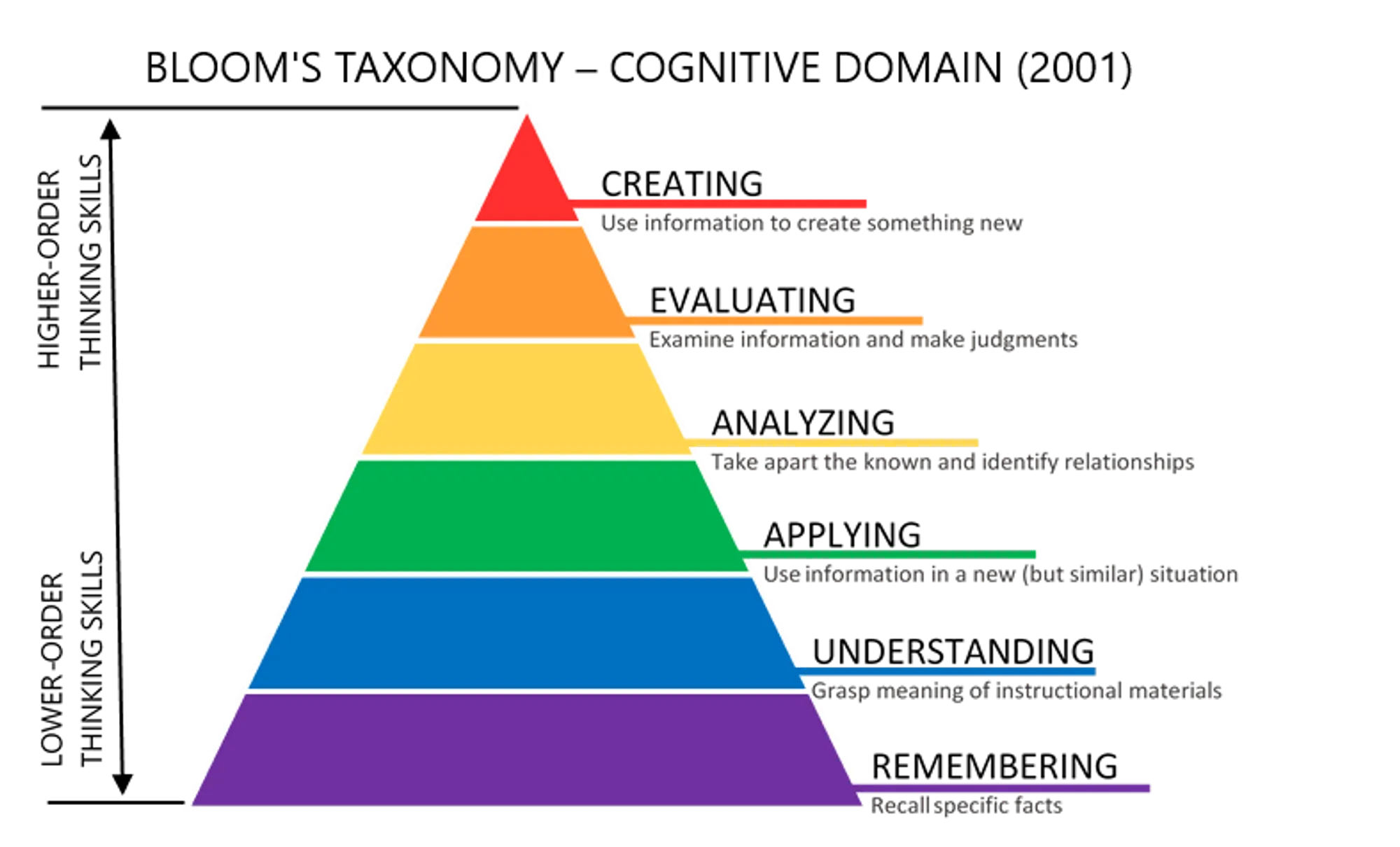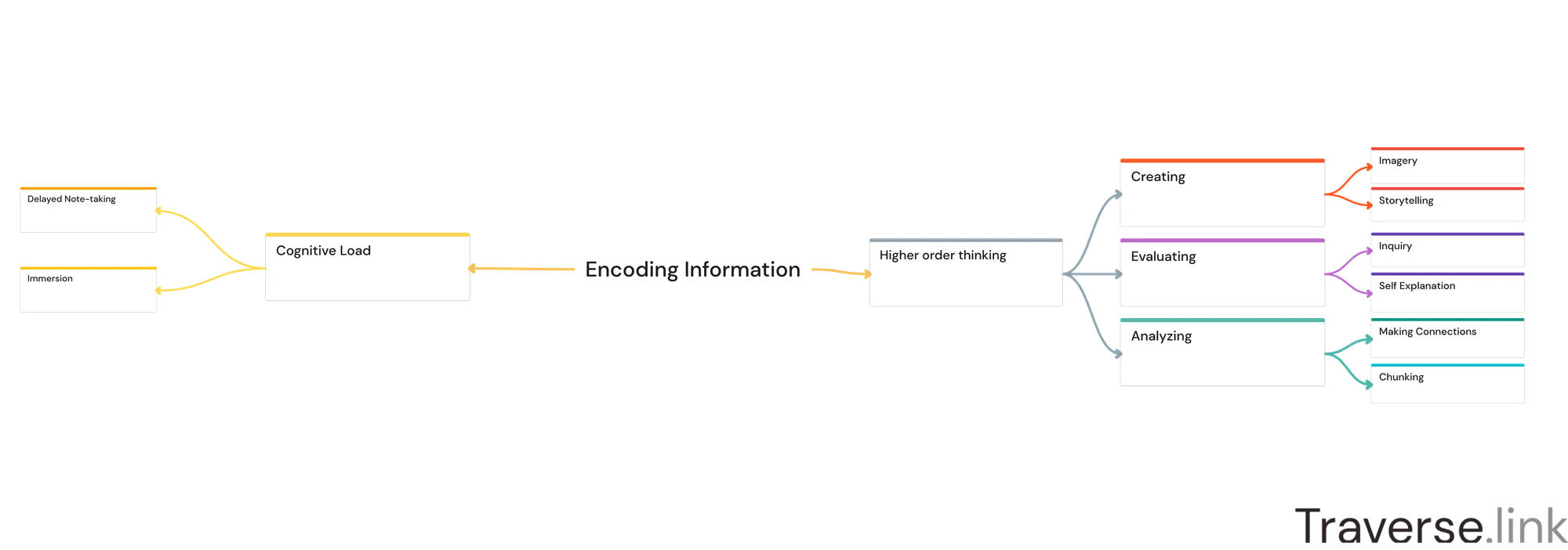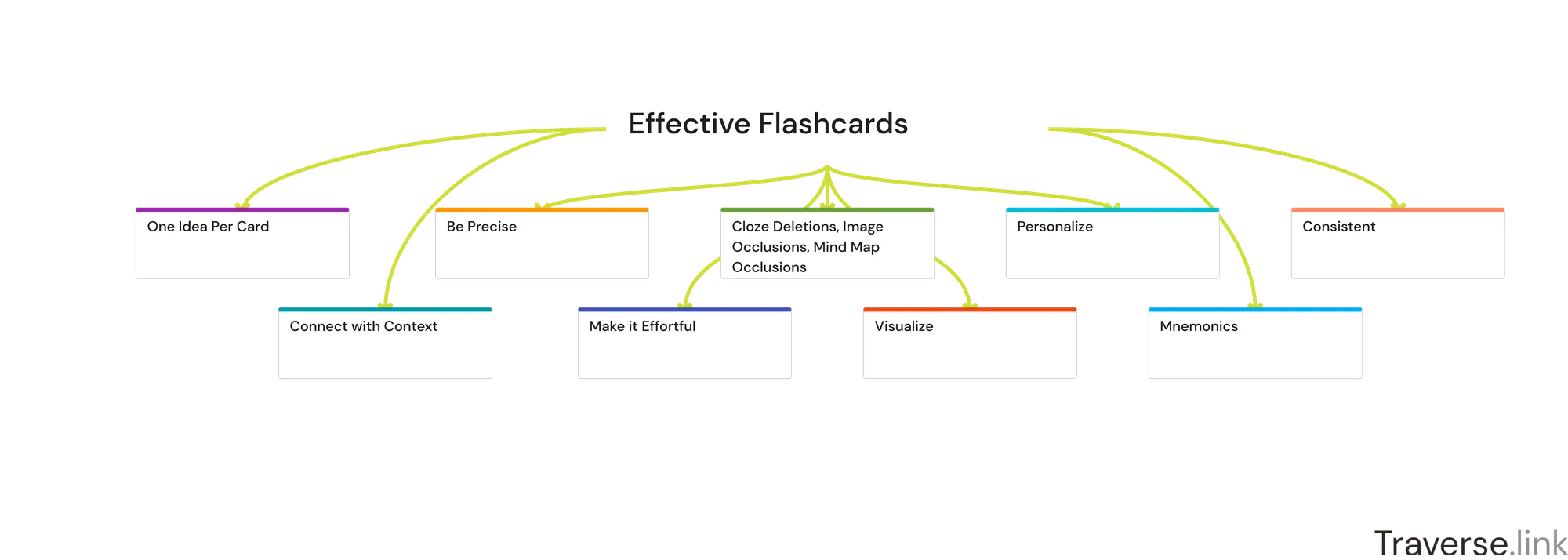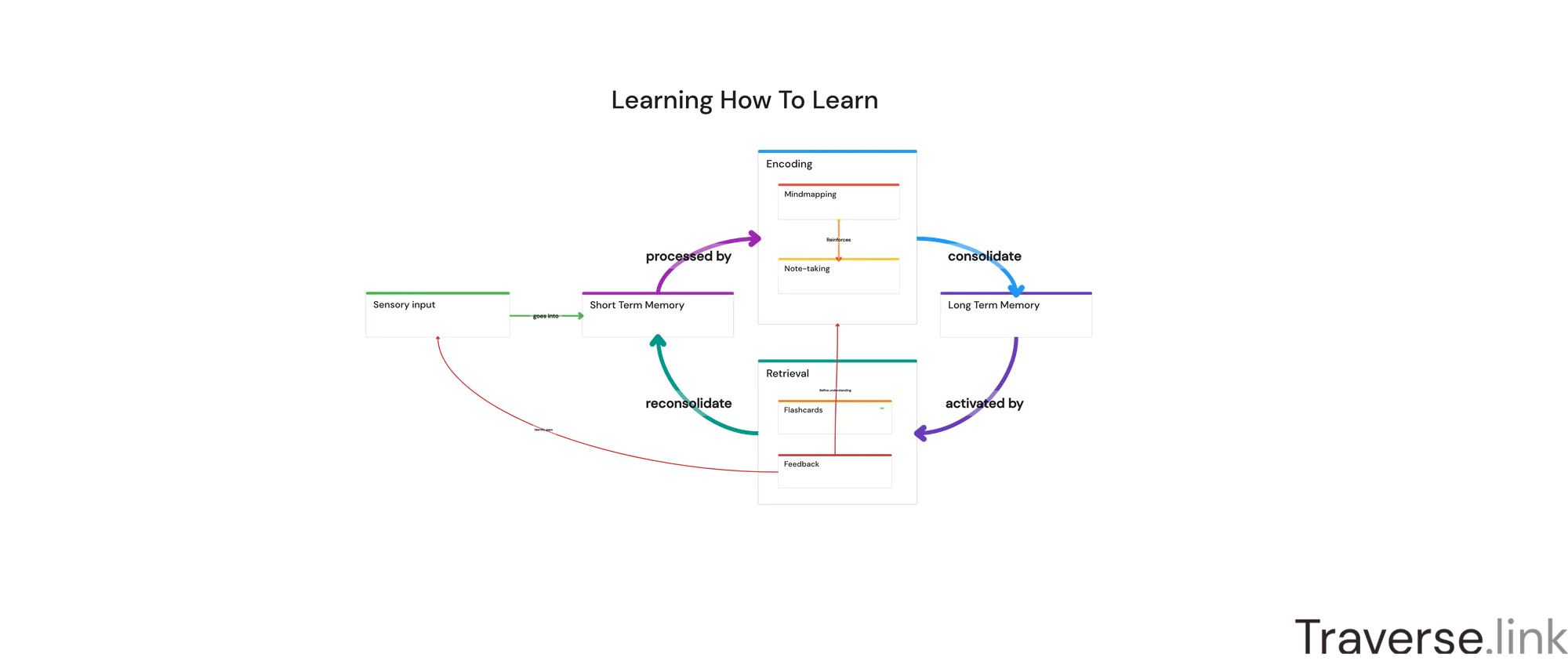In a previous article, I talked about encoding. It means the way we store new information in our brain.
In short, if we store simple isolated facts, they will be forgotten very soon (or they require very frequent review to remember). If we use higher-order thinking to store information as connected concepts, it will make much more logical sense, and retention will be very high, and we can save ourselves a lot of time reviewing.
In this article, I’ll list a couple of techniques you can use to do effective encoding.
Remember, good encoding = higher-order thinking.
I’ll list some techniques here that get you to the top 3 thinking orders of Bloom’s taxonomy.

I Analyzing
TECHNIQUE #1: Chunking [Article]
Chunking is an exercise in pattern recognition: which pieces of information appear together over and over again in a subject? They probably belong in the same chunk. Identifying the main chunks in a subject makes it much easier to understand and remember, because your brain can treat a chunk as just a single thing, rather than all of the separate pieces of information it’s made up of.
TECHNIQUE #2: Making Connections [Video]
There are two levels of making connections:
- Making connections between different chunks and concepts within a subject
- Making connections from the subject to other ideas outside of it. Relating it to yourself and the wider context and placing it in the bigger picture.
In the video above by the Art of Improvement, you’ll learn how Elon Musk made connections between very different fields, enabling him to learn them more deeply than most anyone, and to build successful businesses around them.
II Evaluating
TECHNIQUE #3: Self explanation [Article]
Explaining something to yourself forces you to put into words how things are connected (or where links are missing!) within your brain. This is an excellent exercise to spot knowledge gaps and to get deeper understanding.
Related to this is the Feynman technique I’ve talked about in the past.
TECHNIQUE #4: Inquiry [Video]
Inquiry based learning is a way of triggering your curiosity to fuel your learning. Think about a time you read an article on Wikipedia, clicked a link in the article to another article, and another from there and so on. These links are the trial of your inquiry. Archer Newton explains in the video above how you can apply that more deliberately in your studies.
A related concept is prioritization. Inquiry-based learning ensure you are learning what has the highest priority for you personally.
III Creating
TECHNIQUE #5: Using imagery & storytelling [Podcast]
I already talked a lot about techniques like mind mapping, drawing, doodling, and creating visual stories in other places.
Storytelling is the ultimate form of sense-making. If you can tell a story about a concept, it makes sense and it sticks.
I just wanted to leave you here with my podcast with Robbie Crabtree. He teaches entrepreneurs how to be better speakers, and for that purpose often needs to learn new (technical) fields in a very short time. In this video he reveals how his past as a trail lawyer taught him the exact techniques to do that.
IV Cognitive load
The common denominator between all higher order thinking levels is cognitive load. Cognitive load means making your brain work. And you can actually train how much cognitive load you can handle. A good indicator of where your cognitive load level is now, is counting how often you get bored when learning. If you get bored, you’re not using cognitive load. If you feel challenged (just up to the point of overwhelm), and have to think for a while before finally getting an AHA-moment, that’s a strong indication that you’re using cognitive load. Here’s some techniques to improve you cognitive load level.
TECHNIQUE #6: Delayed note taking [Video]
Many students take notes directly in their lectures, sometimes writing down verbatim everything the professor says.
This is a bad way of taking notes for two reasons:
- Writing takes up your concentration so you can’t focus on what’s being said anymore
- You immediately offload what’s being said onto paper, basically telling your brain: “Don’t occupy yourself with this anymore, it’s on paper”
Point 2) is another way of saying that you’re not using cognitive load. Instead, you should delay your note-taking until shortly after the lecture. You hold on to the feeling of confusion a little while longer. This forces your brain to keep actively processing it. Eventually, you’ll experience an AHA-moment and find something to connect it to. That is the right time to commit your thoughts to paper.
TECHNIQUE #7: Immersion [Free course]
This one is somewhat specific to language learning, although with slight modifications it can be used in many other contexts.
Just immerse yourself in a context where what you want to learn is being practiced. So if you’re learning a language, you’d watch movies or read articles in that language, even though you do not fully comprehend it. This keeps the cognitive load in your brain at a high level.
In the free course linked above, you’ll find interviews with many language learning experts (and oddly enough, yours truly), who’ll tell you how you can leverage immersion to learn faster.
Read More
Resources






